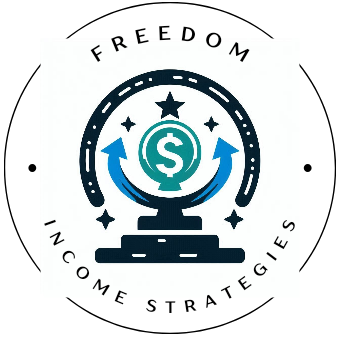Investing in dividend ETFs (Exchange-Traded Funds) has become one of the most popular strategies for generating consistent passive income. As investors seek ways to diversify their portfolios and create reliable cash flows, dividend ETFs offer a solid solution. These ETFs pool together stocks of companies that regularly pay dividends, allowing investors to benefit from both the capital appreciation of the underlying assets and the steady stream of income.
In this blog post, we will explore the top 5 dividend ETFs that provide investors with consistent passive income. Whether you’re a seasoned investor or just starting your journey, these ETFs can serve as great vehicles for growing your wealth over time.
Why Choose Dividend ETFs for Passive Income?
Before diving into the best dividend ETFs, let’s first explore why these investment vehicles are a good choice for those seeking passive income.
1. Steady Income Stream
Dividend-paying stocks are known for their ability to provide regular payouts, often quarterly, to shareholders. When you invest in a dividend ETF, you’re essentially pooling your investment into a variety of these stocks. The result is a more stable and predictable income stream.
2. Diversification
One of the key benefits of dividend ETFs is that they provide instant diversification. Instead of investing in a single dividend-paying stock, an ETF holds shares in multiple companies, reducing the risk associated with individual stocks. This diversification helps mitigate the impact of underperforming stocks in your portfolio.
3. Reinvestment Opportunities
Reinvesting the dividends received from ETFs can enhance the compounding effect, allowing your investment to grow at an accelerated rate. Many brokers also offer automatic dividend reinvestment plans (DRIPs), which can be a powerful tool for long-term wealth building.
4. Tax Advantages
In some cases, dividend income is taxed at a lower rate than ordinary income. However, tax treatment can vary depending on the type of dividend and your tax bracket, so it’s important to consult with a tax advisor to understand the implications based on your personal situation.
5. Inflation Hedge
Certain dividend-paying stocks, especially those in industries like utilities, consumer staples, and healthcare, tend to perform well during periods of inflation. As a result, investing in dividend ETFs can offer a degree of protection against rising prices.
Top 5 Dividend ETFs for Consistent Passive Income
Now that we understand why dividend ETFs are an attractive option for passive income, let’s take a closer look at the top 5 dividend ETFs to consider in 2024.
1. Vanguard Dividend Appreciation ETF (VIG)
Expense Ratio: 0.06%
Dividend Yield: 1.67%
Top Holdings: Apple, Broadcom, Microsoft, JPMorgan Chase & Co.
The Vanguard Dividend Appreciation ETF (VIG) is a standout for investors seeking high-quality, long-term dividend growth. This ETF tracks the performance of the NASDAQ US Dividend Achievers Select Index, which includes U.S. companies with a record of increasing their dividends year after year.
VIG focuses on companies with a history of consistently growing their dividends, making it an ideal choice for those looking for stability and income growth over time. The fund includes a diverse mix of large-cap stocks across various sectors, including technology, healthcare, and consumer staples.
Investors appreciate VIG for its low expense ratio and its reputation for providing reliable income and capital appreciation. While the yield may be slightly lower compared to some other dividend ETFs, the emphasis on dividend growth can provide long-term benefits.
2. Schwab U.S. Dividend Equity ETF (SCHD)
Expense Ratio: 0.06%
Dividend Yield: 3.31%
Top Holdings: Cisco Systems, Bristol-Myers Squibb, Home Depot, BlackRock
The Schwab U.S. Dividend Equity ETF (SCHD) is another strong contender for generating passive income. With a higher dividend yield of 3.31%, SCHD focuses on high-quality U.S. companies with a strong record of paying and growing dividends.
This ETF tracks the Dow Jones U.S. Dividend 100 Index, which selects companies based on factors like dividend yield, payout ratio, and track record of dividend growth. SCHD’s top holdings are diverse and include leading companies in technology, consumer goods, and healthcare.
Schwab’s low expense ratio and the fund’s high dividend yield make SCHD an attractive choice for income-focused investors. Additionally, SCHD has demonstrated solid long-term performance, making it a great option for those seeking to build a consistent income stream.
3. iShares Select Dividend ETF (DVY)
Expense Ratio: 0.38%
Dividend Yield: 3.26%
Top Holdings: Altria Group, AT&T, International Paper, Philip Morris International
The iShares Select Dividend ETF (DVY) focuses on high dividend yield and offers a strong payout to investors. With a dividend yield of 3.26%, this ETF invests primarily in U.S. stocks with a history of strong dividend performance. DVY’s holdings are typically concentrated in sectors such as utilities, energy, and telecommunications, all of which tend to offer higher yields.
Though its expense ratio is higher than some of the other options on this list, the strong dividend yield and focus on high-yield stocks can make it a worthwhile investment for those seeking to maximize passive income.
One thing to note is that DVY’s portfolio leans toward companies in cyclical sectors like energy and telecommunications, which may introduce some volatility in terms of both price and dividend payouts. However, for investors who prioritize income generation over price appreciation, DVY can be a solid choice.
4. SPDR S&P Dividend ETF (SDY)
Expense Ratio: 0.35%
Dividend Yield: 2.31%
Top Holdings: Chevron, Realty Income, Xcel Energy, Kenvue
The SPDR S&P Dividend ETF (SDY) tracks the performance of the S&P High Yield Dividend Aristocrats Index. This index includes companies that have increased their dividends for 20 consecutive years or more. The ETF offers a good mix of companies with strong dividend growth and stability.
SDY’s holdings are typically large-cap U.S. companies from various sectors, including energy, consumer goods, and utilities. The fund’s 2.31% yield makes it a solid option for income-seeking investors, and its focus on dividend aristocrats gives it an edge in terms of stability.
For investors looking for a diversified dividend ETF with a track record of paying rising dividends, SDY is a great choice. The ETF’s long-term growth potential and solid income generation make it an excellent addition to any passive income portfolio.
5. iShares Core High Dividend ETF (HDV)
Expense Ratio: 0.08%
Dividend Yield: 3.28%
Top Holdings: ExxonMobil, Chevron, Johnson & Johnson, AbbVie
The iShares Core High Dividend ETF (HDV) is a low-cost, high-yield ETF that focuses on high-quality U.S. companies with solid dividend yields. With a dividend yield of 3.28%, this ETF is ideal for those looking for a robust passive income stream. HDV tracks the performance of the Morningstar Dividend Yield Focus Index, which selects companies with above-average dividend yields and solid fundamentals.
HDV’s portfolio includes large-cap stocks in sectors such as energy, healthcare, and consumer staples. The ETF’s low expense ratio and strong dividend yield make it a popular choice among income-focused investors.
For those who prioritize dividend income over capital appreciation, HDV can provide consistent cash flow. Additionally, its relatively low expense ratio helps ensure that investors keep more of their returns.
How to Choose the Right Dividend ETF for You
When selecting a dividend ETF for passive income, it’s important to consider several factors:
- Dividend Yield: Higher yields provide more immediate income but may come with higher risk or volatility.
- Expense Ratio: Lower expense ratios ensure that a greater portion of your returns stays in your pocket.
- Dividend Growth: ETFs focused on companies with consistent dividend growth can help provide better long-term returns.
- Sector Allocation: Make sure the ETF is diversified across various sectors to minimize risk.
- Historical Performance: While past performance is not always indicative of future results, it can offer insight into how well the ETF has weathered market conditions.
Conclusion
Dividend ETFs are a great way to build a consistent passive income stream, and choosing the right one depends on your individual goals and risk tolerance. The top 5 dividend ETFs we’ve highlighted—VIG, SCHD, DVY, SDY, and HDV—offer a combination of high dividend yields, low expense ratios, and diversified portfolios. By incorporating one or more of these ETFs into your investment strategy, you can start generating passive income while benefiting from the long-term growth of your investments.
As always, make sure to do your own research and consult with a financial advisor to ensure that your investment choices align with your financial goals and risk profile.

